-
Analytics Tools
-
Powerful analytics
-
Upgrade to Pro
-
Data Tools
-
- Resources
- Pricing
Author profile
Ioana Hreninciuc
Former CEO at GameAnalytics
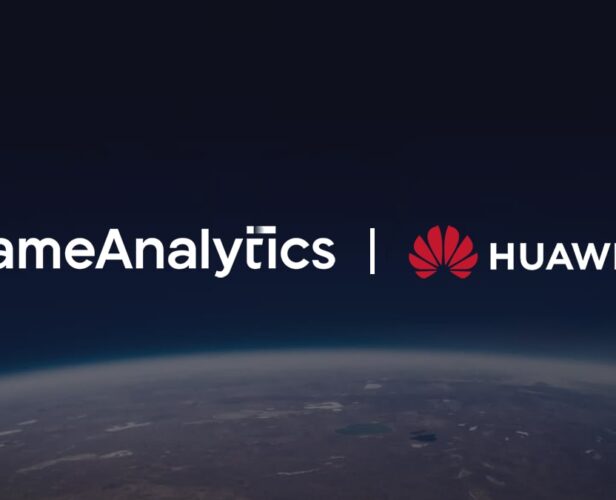
4 min read
#Tool & Product
We’ve Partnered with Huawei and Added Support for OAID
We’ve got some big news for you Huawei developers out there. We’ve now partnered with Huawei and joined their mobile services ecosystem as an official Platform Partner. So if you’re making a game on one of their devices, then we’re thrilled to say that you now have access to free analytics. Huawei is currently the 3rd largest ecosystem worldwide reaching more than 2.3M developers and 530 million AppGallery monthly active users globally. That’s a big chunk of the game dev community. So it only made sense we made Huawei our next official partner. If you’re one of Huawei game devs, make sure you download our latest SDK that now supports OAID (Open Advertising Identifier for Huawei devices). Read on to get more details. What’s changed So, what’s exactly new? Let’s break it down: GameAnalytics joins Huawei Developer Ecosystem as an...

5 min read
#Tool & Product
Data Export is going away
Update: DataSuite features are now available in a single, affordable, bundle. Find out how to save on your data processing costs for games here. While we work hard to add more and more features to GameAnalytics, we occasionally have to say goodbye to a feature. Today we’re announcing the well-deserved retirement of our Data Export. If you currently use our Data Export, then please read on. There are some key changes you need to be aware of, and some next steps you may need to take. Here are the details. We’re retiring our Data Export We’re suspending access to the Data Export on May 31st, 2021, a little under three months from now. We’re replacing it with a series of new services we’ve been developing in collaboration with studios and publishers in our community. The Player Warehouse is an instant...

6 min read
#Tool & Product
How our Free and Premium Services are Evolving in 2021
2020 has been our most productive year yet. If you’ve been with us for a while, then you’ve probably noticed the amount of updates and releases we’ve done over the last 12 months. With so many products and services now under our belt (and more to come), we wanted to take a moment and share in more detail our vision for the future with you, specifically our products and pricing models. So that you can have a clear picture of exactly where we’re heading as a company. Hopefully, this should help you build tools and services around our technology stack with the peace of mind that they will be in place and perform well for years to come. We’ll go over the priorities not only from a product perspective, but also for our team and business. If you’re interested in...

6 min read
#Ads & Monetization
Why AdOps and LTV are Essential to Your Softlaunch
The term ‘live ops’ is an industry-standard. Most large and mid-sized studios and publishers have a department that remotely configure their games, whether that’s localization, in-game events like flash sales, or daily bonuses. So what is ad ops? And where does it fit in? Well, before we can explain that, we need to explain Lifetime Value (LTV). Optimize your LTV at softlaunch In games that rely on ads to make money, it’s usually the user acquisition and monetization teams who are fighting to increase LTV. They’ll make the Cost Per Install (CPI) 1 cent cheaper or get the player to watch one more teeny tiny ad. All to creep up their profit, cent by cent. But developers almost always optimize their ads after they launch their game – it’s already live and getting thousands of downloads a day. Leaving it...
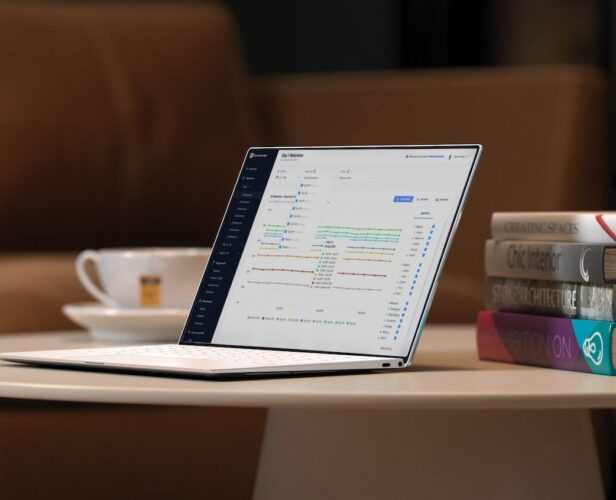
6 min read
#Data & Analytics
2020 in Metrics: Understanding Casual and Hypercasual Gaming Markets
2020’s been a year like no other. Casual and hypercasual gaming has fared better than most industries – overall playtime has been consistently up by around 15% on previous years. But when all of our usual social norms have been upended by global lockdowns, how do we make sense of the player metrics we rely on? I recently hosted a webinar on this topic. Using Benchmarks+ from GameAnalytics, I pulled some of the most telling player data from the first eight months of 2020. I dived into the key metrics like retention, session lengths, and playtime. And I did a deep dive specifically on hypercasual – comparing the different app stores and regions. Here’s a summary of the trends I found that will be most useful for developers to understand. The differences between iOS and Android It’s important not to...

6 min read
#Strategies
How to Find Player LTV Blind Spots and Earn More From Your Game
The ecosystem of mobile ads in gaming has evolved to a point where it’s possible to understand what actions players took, and from this, learn how to generate the most Lifetime Value (LTV). Yet most tools out there are fairly new and, like many studios, you may be missing out by simply not integrating these into your typical work processes. To help give you a head start into what’s changed and why it’s important, we put together this guide on the most common blind spots for player LTV, and how to identify and address them to grow your game’s revenue and profitability. Let’s get started. Use the LTV metric to know which platform is performing the best The same game can perform very differently on Android compared to iOS. Even more so when you look across regions. In China, the...

4 min read
#Data & Analytics
What’s Their Secret? 4 Steps Successful Publishers Take to Find Hit Games
We’ve all asked ourselves this question: “How do publishers release hit game after hit game? How do they know which ones are going to be successful?”. Now, we don’t know all the ingredients to their secret sauce (be it their relationships with developers, network, or UA tools). But what we can do is go over what we know, and what we do best. Data. Data is a crucial part in finding the next big hit. But sifting through tens or hundreds of prototypes at one time is in itself, a massive challenge. Especially when your team is small. Step 1: Find more prototypes to evaluate In an ideal world, you’d open up your laptop and see key metrics (like day 1 retention, day 7, and Playtime) for a bunch of new games that were submitted yesterday. Well, you can. And...

2 min read
#Tool & Product
Our Approach to Open Source – From SDKs to Data Libraries
Recently, Mintegral not only announced that they would make their SDK open source but also shared an inside look into how they serve and show ads. And in a move to increase transparency in the industry, they’re now encouraging other companies in the mobile space to do the same. At GameAnalytics, we’re no stranger to open source. Our C++, C#, and JavaScript SDKs are all open source. Our entire library of SDKs is built on our public data collection API, which is fully transparent and documented (you can review it here). At the same time, proper data collection is a key part of having useful analytics. So developers can see what events are collected by GameAnalytics in two ways: Our SDK’s provide full debugging options of what is sent to our servers. You can set this flag at integration time...

3 min read
#Tool & Product
Using our iOS SDK? You’ll need to update it now (before iOS 14 comes out)
Update: Apple will delay it’s IDFA changes in iOS 14 until early next year Editor’s note: There’s been some news out since we last published this article. Apple has decided to postpone it’s planned IDFA restrictions until early next year (date TBC). So developers have a bit more breathing time to make the necessary updates. Which is great news. But we still recommend you update your SDKs now, rather than in a few months’ time. Here’s why: —————- The iOS 14 update is fast approaching. From September early next year, players will be asked if they would like to allow or restrict data sharing, per app and game, on all Apple devices. This will be a big change for game and app developers alike. So in preparation for this release, there’s a couple of things you’ll need to do. The...
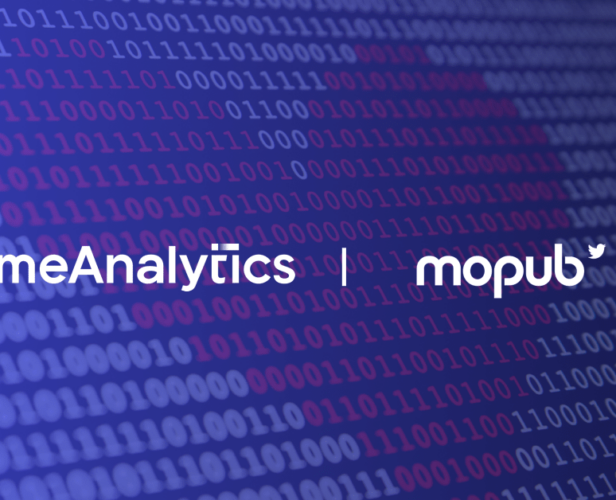
4 min read
#Tool & Product
Ad revenue data is coming to GameAnalytics: get started today
For the past few months, we’ve been working on putting all the pieces in place to get ad revenue data into GameAnalytics (y-a-y!). We’re closer than ever, with our first integration launching in the next couple of weeks, and our SDK now ready to collect data. So without further ado, here’s everything you need to know about our ad revenue roll-out. Now available: impression-level ad revenue data Impression-level revenue data is the most granular data point, and as such it not only enables publishers to aggregate and analyze data at the user level, but also allows publishers to optimize on moment to moment ad and game experience. And now, our most popular SDKs already include a built-in integration. Our friends at MoPub provide an SDK-based solution for collecting impression-level ad revenue data (ILRD), and now you’ll be happy to hear...

2 min read
#Tool & Product
Supporting BAME game dev teams with industry insights
A few days ago, we issued a statement mentioning that we are willing to do our part to support the black community, as well as other ethnic minorities. Since then, we’ve been discussing ways to do this, not just now in the short term, but on an ongoing basis. We are a small company, but something we do have plenty of is data and insights. We also have a wonderful community of talented indie game developers from around the world, who are working very hard to get their first hit. Knowing which mechanics, genre, or publisher to pick can make a massive difference in a prototype’s success, and insights are essential to that decision process. We put two and two together and we’ve decided to offer up to 12 months free access to our premium insights service, Benchmarks+, for indie...
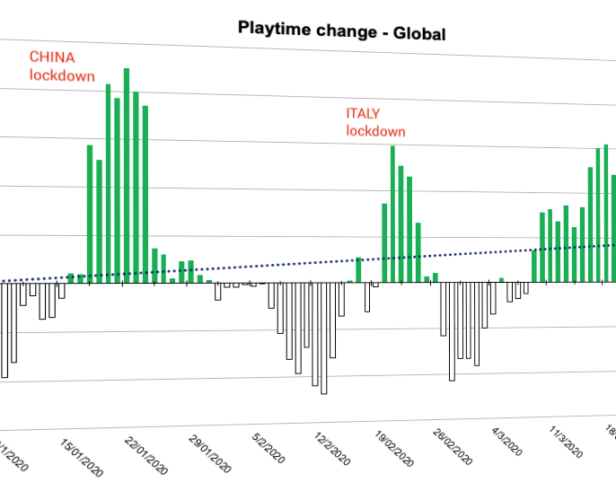
8 min read
#Data & Analytics
Mobile playtime increases by 62%, with IAP up by around 30% in Q1
As millions of people work from home or are on furlough, they’ve needed something to pass the time: streaming TV shows, learning instruments and, of course, playing games. At least, that’s the assumption. We dug into our data to find that playtime has soared and people are spending more, but each genre is affected differently. We’ve analyzed our data in two ways 1. Global network analysis Our first approach was to look at the overall data across our network. Over 75,000 developers use GameAnalytics to analyze how gamers are playing. That’s about 40,000 active mobile games, all in all, including 40 of the top 100 most downloaded games on the app stores. By combining all this data, we can see how more than a third of the world’s mobile players are behaving. Specifically, we analyzed playtime and how much people...
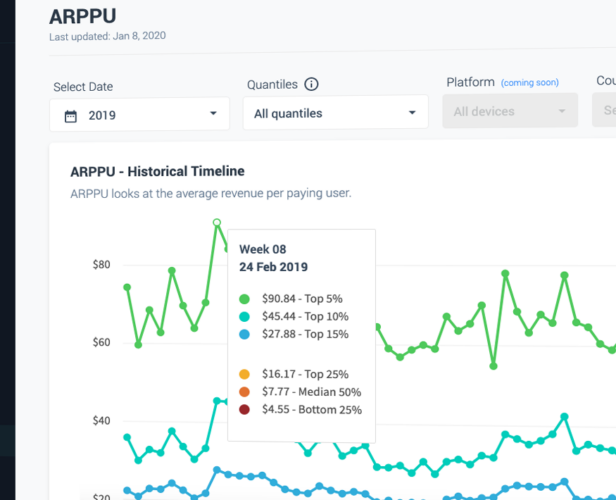
4 min read
#Data & Analytics
ARPPU in top performing games up 20% compared to 2016
Analysis from Benchmarks+ takes into account several different performance quantiles, including the “superstars” (top 5%, 10%, 15%), and the “standard” quantiles (top 25%, median, bottom 25%). We’ve segmented the analysis in this way to give a broad signal of typical performance bands seen across the industry. Tracking these quantiles also sheds light on historical trends per “band” to give a better sense of how the industry has evolved. Using Benchmarks+, we have analyzed how the main gaming categories and genres have performed for daily ARPPU (Average Revenue Per Paying User), looking at the full year of 2019, and all the way back to 2016. For this analysis, our key focus is the top 5% performance for this metric, which is a good indication of how much “whales” spend in popular titles on any given day. All revenue is IAP based...